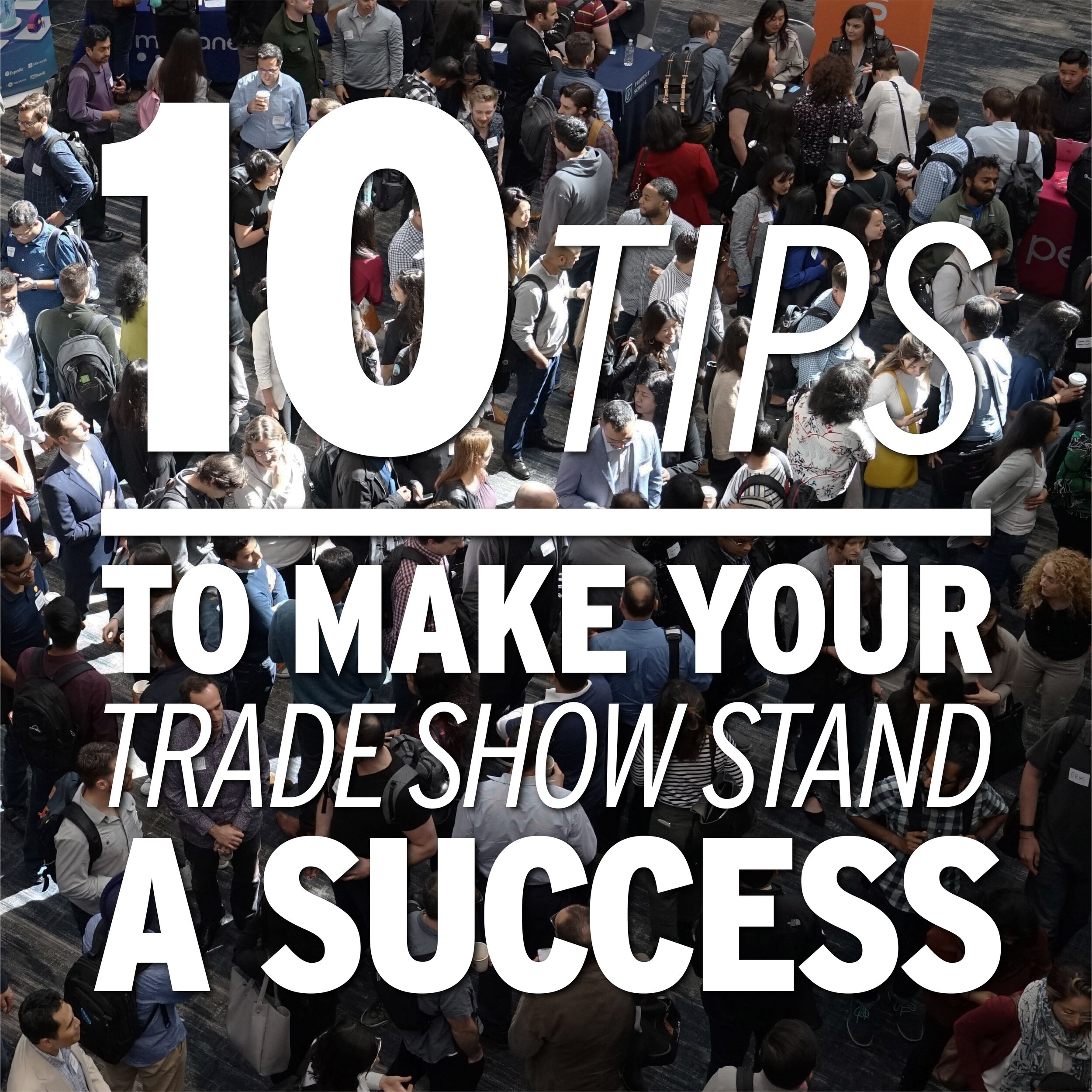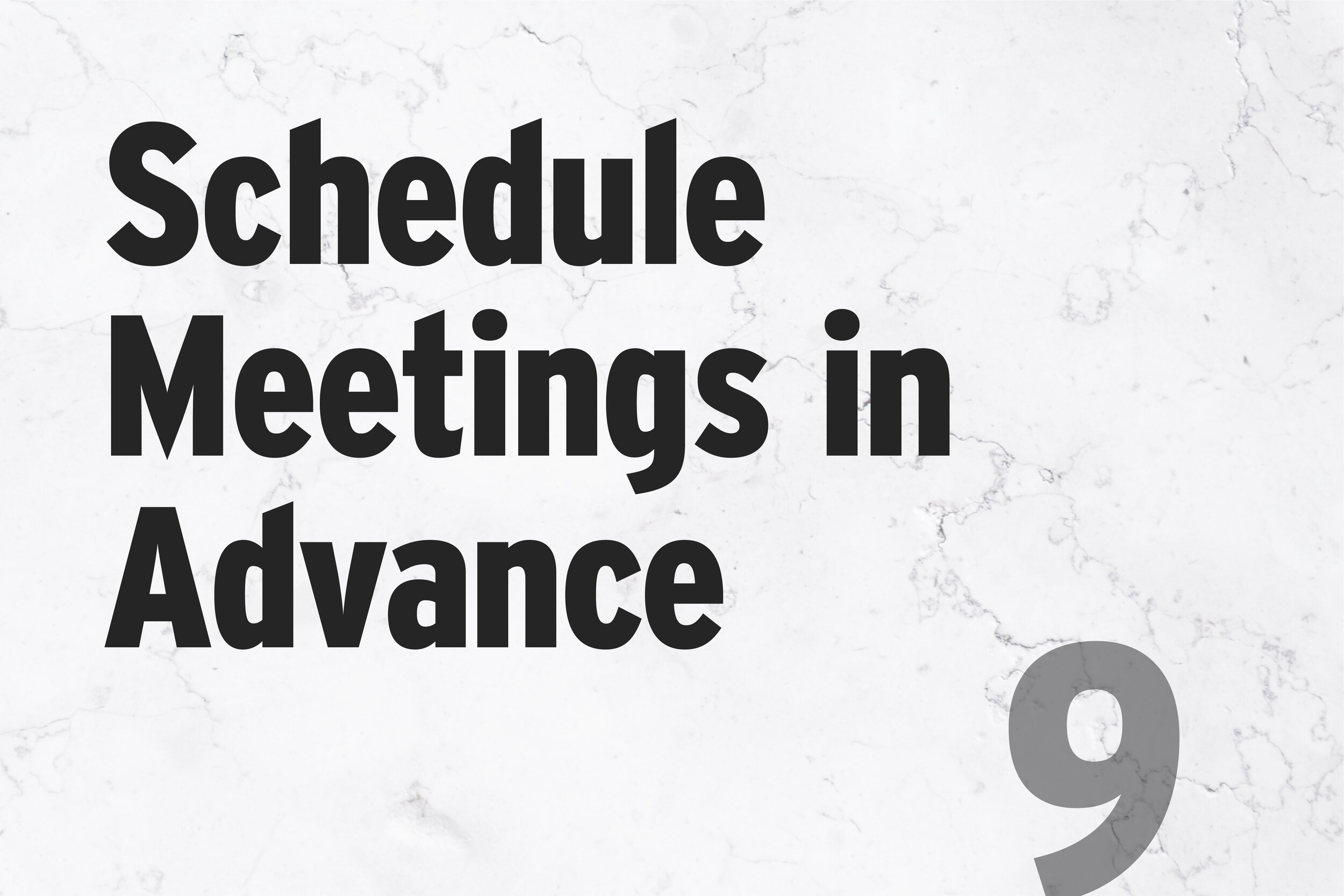10 Tips to Make Your Trade Show Stand a Success
Image courtesy of @productschool via Unsplash.
Exhibiting at an event is great way of getting new customers, reconnecting with existing customers, getting the latest industry updates, and (sneakily) checking out the competition.
However, after five years of exhibiting and helping exhibitors at trade shows and conferences, I’ve noticed that too many companies aren’t making the most out of their presence.
I don’t want business owners to see trade shows and conferences as money-vacuums, because they can be fantastic sources of income, despite the initial (usually frightening) cost.
Exhibiting at events doesn’t have to cost the earth, and for a big chunk of exhibitors, it doesn’t: 21% of exhibitors spend between £100-£500 per year on their stands, and 43% spend between £500-£2000.
If you’re testing exhibiting for the first time, or you’re a veteran exhibitor looking to boost your ROI, read on…
Image courtesy of @augustinewongl via Unsplash.
Use Social Media
Let your social media followers know about your event attendance, and where your stand is located before the event.
There’s usually an event hashtag, so use that whenever you’re promoting your attendance, and the event organisers might re-share your post to their followers.
It’s also worthwhile following the event organisers, and tagging them in your posts and photos — again, increasing the chance that they’ll share it.
If you can, you should also post on social media whilst you’re at the event.
If you’re unsure of what to post about, here are a few ideas:
Why you’re exhibiting.
Where your stand is based.
Behind-the-scenes photos during the set-up.
Which products or services you’re showcasing at the event.
Useful insights you might hear from the show’s speakers.
If you’re holding a competition on-stand, promote it!
Image courtesy of @augustinewongl via Unsplash.
Giveaways, Promotional Materials, and Stand Demonstrations
There’s often a lot happening at most events, so make sure you give attendees a reason to visit your stand over your competitors’.
Even if they’re a bit gimmicky, they can still get attendees to visit your stand — from there, it’s up to you to turn them into a lead or a customer.
Here are a few ideas of ways to entice people onto your stand:
Giveaways: A lot of exhibitors might have freebies like the usual sunglasses, water bottles, and plastic throwaway things, but what can you offer as a giveaway that your audience will actually use and value? Every time they use it, they’ll think of your brand, even if it’s subconsciously. Plus, it’s free advertising, if it’s branded well.
Competitions: Everyone loves to feel like a winner. Competitions can be great as a lure for attendees, as long as you’re offering them the chance to win something worthwhile. If they can just win a free cup of coffee, it’s not really worth it. At a trade show where the company I was working for at the time was exhibiting, we had set up a ‘Wheel of Fortune’ for prospective customers to spin, for prizes like 5% off their order when they placed one on-stand, all the way up to 50% off their order. We had more orders placed for that trade show than ever before!
On-stand demonstrations: This works particularly well for those who are offering a service, or those that have products that ‘do something’. For example, I’ve conducted platform demonstrations at recent events where simply telling people what it did wasn’t quite enough. At a previous company that sold toys, I’ve also used some toys to break the monotony of an otherwise corporate event — mainly bubble machines!
Useful content: Creating handy content, like reports, factsheets, and articles, that you might otherwise charge for, can be a great way to get people interested in your company. If you have an expertise that’s relevant to your business, the event, or your customers, make it into free content for event attendees.
These are all great ways of breaking the ice with potential customers and drawing them in to talk about your product or service.
Image courtesy of @augustinewongl via Unsplash.
Work With the Event Organisers
The event organisers want you to succeed while at their event.
They will likely have various different ways that they can help promote your stand, so have a conversation with them well in advance of the event to see which of their promotional activities work well for you.
Some of these promotional activities may carry a cost (usually those that involve printing), but consider how many customers will be looking at them, and how many more could be brought to your stand.
Here are a few promotional activities that most event organisers will be able to arrange:
Advert in the event programme.
Inclusion in an exhibitors directory (often this is included for free as part of your exhibition stand, but you may have to pay extra for a larger space for an advert).
Promotion on social media.
Promotion in an event email.
Mention over the tannoy at the event.
Sponsorship opportunities: these are usually sponsorship of the whole event, networking sessions, panel discussions, or specific presentations.
Speaking opportunities: if there’s a particular area of expertise that you possess that’s relevant to the event, your customers and your business, speak with the event organisers about presenting at the event. You’re usually allowed to add a bit of a promotional introduction, as well.
Image courtesy of @augustinewongl via Unsplash.
Set Your Objectives
Before you design your stand, decide what to bring, or which members of staff to attend the stand, you should set your objectives — so you know what a successful exhibition means for you.
If your objective is to get new leads, how many leads would you aim to collect?
If you’re aiming to make sales, how much money, or how many sales, would you want to make?
If you’re working to have a certain number of people visit your stand, how many people do you want?
Set yourself a clear goal so you can determine whether the event has been successful for you.
Image courtesy of @augustinewongl via Unsplash.
Your Lead Capture Process
Before you attend, you should know how you will capture prospective customers’ contact details.
Will you be using a spreadsheet, paper form, collect business cards, or will you add details directly onto your system?
Once the event is over, you should also have your follow-up process confirmed, so you can keep in contact with your leads in a timely manner.
It can be useful to create a flowchart of the process, and if you have employees who will be processing those leads, make sure that they know exactly what they need to be doing as soon as they get the data.
The key is to action your leads as soon as possible, while the event is still fresh in their minds.
Image courtesy of @augustinewongl via Unsplash.
Attend the After-Event Networking Sessions
The event organisers will also sometimes host informal networking sessions at our conferences, usually at the end of the first day.
These are a great way to meet potential customers in a relaxed setting, so you can introduce yourself and what you do, then invite them to visit your stand the next day.
You may also have the chance to sponsor these networking sessions, or if not, you could potentially buy your customers a drink.
It’s important for both the exhibitors and the attendees to see each other as individual people, rather than just as corporate brands or customers.
It helps us realise that we’re all working to help each other, rather than just cash-grabbing.
Image courtesy of @augustinewongl via Unsplash.
Design Your Stand
Plan what your stand will look like way ahead of time.
Even if it’s just a rough sketch, as long as you have an idea of what you want it to look like, it’s better than bringing everything with you and hoping you’ll figure it out when you get there.
Aim to plot out each section of your stand — if you’re displaying products, plan how you’re going to display them.
Don’t forget to plan a space for you to stand, as well!
It can also be tempting to display lots of marketing materials on your stand.
However, this can look cluttered, so be particular about which marketing materials you bring and have a clear message that ties in with the overall objective of your event attendance.
Image courtesy of @augustinewongl via Unsplash.
Work the Floor
It’s not always possible, depending on the event, but try to mingle and network during the conference.
Browse the programme ahead of the event to see which presentations either you or your customers are likely to be interested in, and write up or practice some talking points, linking how your product or service can help.
You can also check out the competition, to see what they’re doing and how you can fill in the gaps.
If possible, bring at least two people to work your stand at the event, so you can take it in turns to mingle with the attendees, spy on your competitors, and attend a few talks yourself.
Image courtesy of @augustinewongl via Unsplash.
Schedule Meetings in Advance
Some event organisers provide an attendee list a few days prior to the event, so take the opportunity to book meetings with those attendees.
If you have a lot of meetings, try to make sure that you leave some space open for walk-ins, or have a process for handling them.
Some event organisers will also arrange for meeting rooms that you can book, depending on the venue.
Image courtesy of @augustinewongl via Unsplash.
Be Attentive and Welcoming
It can be hard being away from your desk for a day or two but don’t be tempted to bury your head in your laptop at your stand during the event.
Take care of your emails at the start and end of each day so you can use the actual conference to focus on your stand.
Eye contact is also important, if you’re avoiding someone’s gaze, you’ll look nervous or uninterested.
Be sure to introduce yourself to anyone who comes towards your stand as well — you should make the first move.
Make it easy for them to engage in conversation with you — even if you have a few lines prepared in advance, that can work wonders.
Remember, those attendees are expecting to find businesses like yours, with products and services to solve their problems.
They want to find out more, so let them.
Ultimately, events are still great ways to promote your product or service, even if we are going more digital.
Nothing can quite replace actually physically being at an event and meeting people in person.












